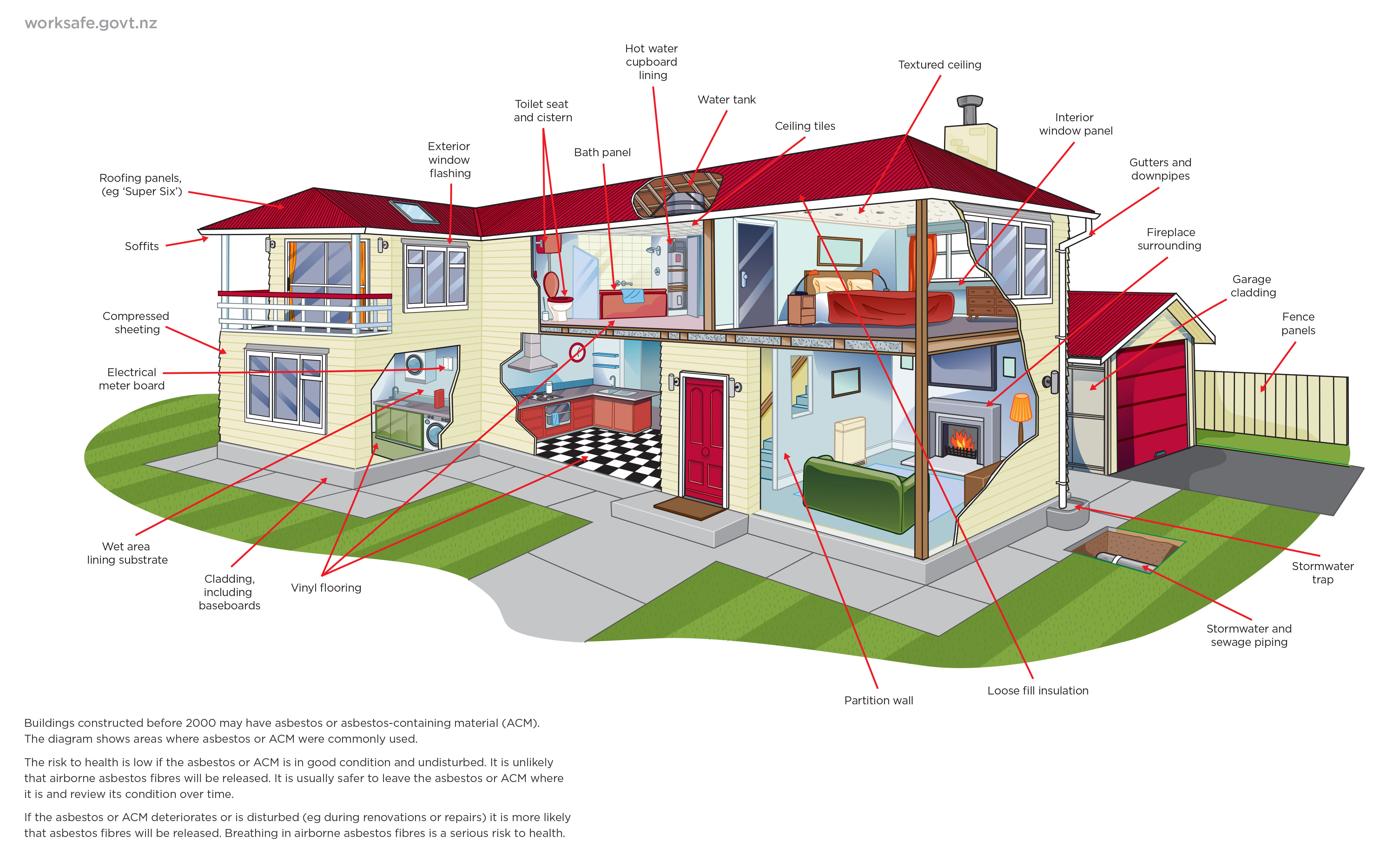Discovering Asbestos in Rental Homes
16 April 2018

Creating an Asbestos Management Plan
Landlords throughout New Zealand often perform repairs and renovations to their rental properties to provide healthy and well-maintained homes for renters. While performing this work, landlords may discover building elements that contain asbestos. The Health and Safety at Work (Asbestos) 2016 regulations state that anyone who owns a rental property affected by asbestos must remediate asbestos-related risks and develop an asbestos management plan.
What Is Asbestos?
Asbestos consists of fibrous minerals that occur naturally in the environment. Previously, asbestos was used in commercial building products because of its high heat, fire and electrical resistance. Today, however, asbestos is considered a health hazard as we now know that the inhalation of asbestos fibres into the lungs can cause inflammation of the lung tissues. Breathing in asbestos can cause serious health conditions, specifically, lung cancer, mesothelioma and asbestosis.
What Residential Homes Are Impacted?
Any home built or renovated prior to 2000 may contain asbestos. Legally, landlords are considered “persons conducting a business or undertaking (PCBUs)”, and so they must abide by the requirements set out in the Health and Safety at Work (Asbestos) 2016 regulations. A rental property may contain asbestos. The regulations only take effect when any repair, remodelling or demolition work is done to the property where asbestos may become exposed and disturbed.

Photo Source: https://worksafe.govt.nz/
What Should Landlords Do?
If a rental property contains asbestos and building works are planned, an asbestos management plan must be prepared and coordinated with any other PCBUs who are involved in the repair or construction work, including property managers, contractors and advisors to property managers and landlords. The asbestos management plan should address and mitigate any asbestos-related risks that could affect the health and safety of neighbours, tenants, contractors and anyone else in the vicinity. In addition, landlords must inform their tenants about the presence of asbestos before the work takes place.
Must Asbestos Be Removed?
If found, not all asbestos containing materials (ACMs) must be removed. If the asbestos is in good condition and is non-friable (i.e. it will not crumble, be reduced to a powder or become pulverized when touched), it can be left in place so long as the repair work does not disturb it.
If this is not the case, when reasonably practical to do so, asbestos should be identified and removed. To achieve this, landlords must work with Class A or Class B licensed asbestos removalists who may also help landlords prepare their asbestos management plan.
Sole Agents Ltd. All rights reserved.
Information provided above is for general reference only. While every effort is made to ensure accuracy, Sole Agents Ltd disclaims any liability for any loss or damage whatsover that may arise whether directly or indirectly as a result of anyerror, inaccuracy or omission.


